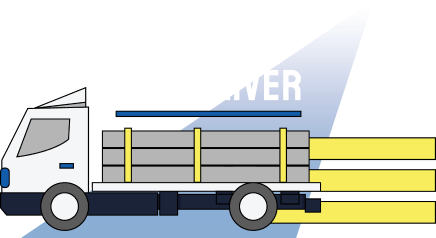When it comes to construction projects, scaffolding plays a critical role in ensuring the safety and efficiency of work performed at heights. But scaffolding is not a one-size-fits-all solution; the type, design, and setup of scaffolding must be carefully planned to suit the specific needs of the project. In this post, we’ll explore the different types of scaffolding, who should be responsible for designing them, and the importance of working with a trusted scaffolding provider like House of Ladders.

Why Scaffold Design Matters
Scaffold design is a complex task that requires technical knowledge, safety awareness, and a deep understanding of the specific demands of the construction site. Who should design a scaffold is a key responsibility for any construction project. Poorly designed scaffolding can lead to accidents, project delays, and costly liabilities. Therefore, having a qualified professional design and oversee the installation of your scaffolding is not just a best practice—it’s essential for worker safety and project success.
Types of Scaffolding and Who Designs Them
Different types of scaffolding are used for various construction needs, and each has its own set of design considerations. Here’s a breakdown of the common types of scaffolding and who should be responsible for their design.
1. System Scaffolding
System scaffolding is highly adaptable and consists of modular components that can be used in complex structures. It is ideal for projects where workers need to navigate difficult angles or uneven surfaces, such as in industrial plants or large commercial buildings.
Who designs it?
For system scaffolding, a qualified scaffold designer or engineer should be responsible for creating the layout. The designer must ensure that the scaffolding meets local safety standards and can bear the load of workers, materials, and equipment. Additionally, the system must account for specific site conditions such as uneven terrain or weather conditions, making professional expertise critical. For setup scaffolding services, contact House of Ladders.
2. Frame and Brace Scaffolding
Frame and brace scaffolding is one of the most commonly used types, especially for residential and commercial building construction. It consists of welded frames and cross braces, offering stability and ease of setup.
Who designs it?
For smaller projects, the design of frame and brace scaffolding may be handled by an experienced scaffolding contractor or a qualified foreman. However, for larger or more complex builds, the scaffolding should be designed by a certified engineer to ensure load capacity and worker safety are prioritized.
3. Shoring
Shoring scaffolding is used to support structures or prevent collapses during construction, particularly when working on building foundations, underground projects, or bridges. Because it often has to bear significant loads, shoring must be robust and precisely engineered.
Who designs it?
Shoring scaffolding always requires design by a professional engineer who is experienced in structural loads. Calculations for weight, load-bearing capacity, and environmental conditions must be rigorously checked to ensure safety and prevent structural failure.
4. Trash Chutes
Trash chutes are essential for safely removing debris from construction sites, particularly in high-rise projects. These chutes are often attached to scaffolding, making their design an integral part of the overall scaffold system.
Who designs it?
A trash chute system can typically be designed by a scaffolding contractor with experience in waste management solutions. However, if the trash chute is part of a larger or more complex scaffolding setup, it’s wise to have an engineer review the design to ensure safety and efficiency.
5. Swing Stage Scaffolding
Swing stage scaffolding, often seen in window washing or façade work on tall buildings, consists of a suspended platform that can be raised or lowered. Given the height at which this scaffolding operates, precise design and strict safety protocols are critical.
Who designs it?
Swing stage scaffolding should be designed by an experienced engineer familiar with both suspension systems and building dynamics. The design must account for the building’s dimensions, wind loads, and the weight of workers and materials to avoid any dangerous sway or instability.
The Role of a Qualified Scaffolding Provider
Designing scaffolding is just one part of a safe and efficient project. Equally important is working with a provider that can not only supply high-quality scaffolding but also ensure it is correctly installed and inspected. At House of Ladders, we offer comprehensive scaffolding rental, sales, and setup services across Fort Lauderdale, Fort Myers, and Miami. Whether your project requires system scaffolding, frame and brace, shoring, trash chutes, or swing stage scaffolding, our team of experienced professionals ensures that every scaffold is designed and installed to meet the highest safety standards.
Why Choose House of Ladders?
At House of Ladders, we understand the intricacies of scaffold design and installation. Our team includes experts who are well-versed in local and national safety codes, ensuring that every project—no matter how simple or complex—is handled with professionalism and care. We take pride in offering scaffold rental, custom fabrication, and safety solutions tailored to the unique needs of each project.
Whether you’re working on a residential build or a large commercial site, we have the scaffolding solutions you need to keep your project on track and your workers safe.
The design of scaffolding is not something to be taken lightly. Depending on the type of scaffolding and the complexity of the project, the design could require a certified engineer, an experienced scaffold designer, or a knowledgeable contractor. By partnering with a reliable scaffolding provider like House of Ladders, you can ensure that your scaffolding is safe, efficient, and tailored to your project’s needs.
For scaffolding rental, sales, and setup services in Fort Lauderdale, Fort Myers, and Miami, contact us today and let’s discuss how we can support your next project!


